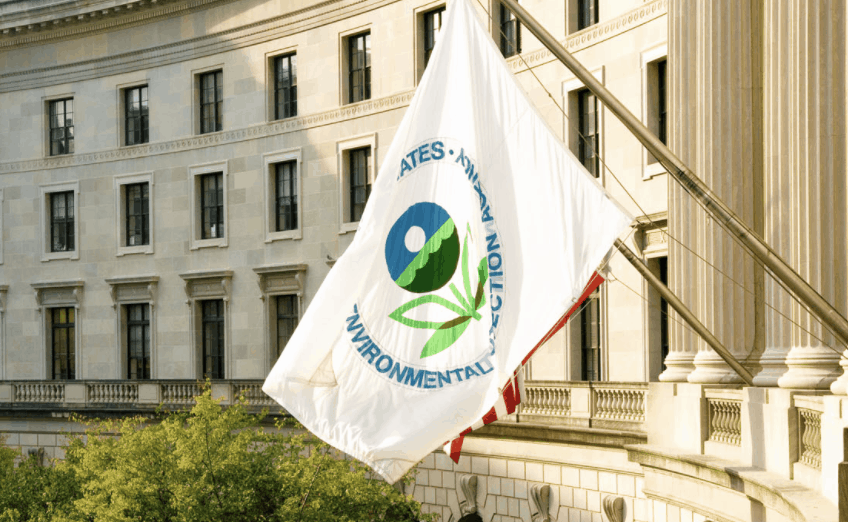ACE Rule Massive Improvement over ‘Clean Power’ Plan

 The Environmental Protection Agency (EPA) yesterday finalized its Affordable Clean Energy (ACE) rule to regulate carbon dioxide emissions from existing coal power plants under Section 111(d) of the Clean Air Act. ACE simultaneously repeals the Obama administration’s so-called Clean Power Plan (CPP).
The Environmental Protection Agency (EPA) yesterday finalized its Affordable Clean Energy (ACE) rule to regulate carbon dioxide emissions from existing coal power plants under Section 111(d) of the Clean Air Act. ACE simultaneously repeals the Obama administration’s so-called Clean Power Plan (CPP).
ACE is a massive improvement over the Obama policy. It gets the EPA out of the business of playing electricity czar to the states, rescinds the prior administration’s unlawful attempt to impose unattainable carbon dioxide emission standards on fossil fuel power plants, and establishes a regulatory roadblock to any future administration tempted to resume the war on coal. Instead of imposing statewide emission reduction targets, it allows states to develop standards tailored to individual facilities based on their capabilities, limitations, and remaining useful life.
Climate campaigners and other progressives typically react to ACE in two ways. Sometimes they deplore it as a dreadful rollback of President Obama’s efforts to “save the planet.” On other occasions, especially recently, they disdain it as a futile effort to hold back the “green energy transformation.”
For example, E&E News quotes the finding, in a new report by Ceres, Bank of America, power producers Entergy and Exelon, and the Natural Resources Defense Council, that “In 2017, for the first year ever, zero-carbon resources accounted for more electricity generation (35.4 percent) than either gas (32.1 percent) or coal (29.8 percent).”
Those percentages are not as significant as E&E suggests. As the CERES report makes clear, “zero-carbon resources” include hydro- and nuclear-power, which together provide nearly three times as much electricity as wind, solar, and geothermal combined. Coal still provides more electricity than any other “zero-carbon” resource.

Nonetheless, utilities closed, or announced plans to close, record numbers of coal power plants in both 2017 and 2018—data reflected in the EPA’s regulatory impact analysis for the proposed ACE rule. That analysis estimated that total U.S. coal generating capacity had declined from 269 gigawatts in August 2015 to 226 gigawatts in August 2018 (p. 3-5). Surprisingly, that means more coal capacity had already retired than the Obama-era EPA estimated would retire by 2030 under the Clean Power Plan (p. 3-30).
The impact analysis for the proposed ACE rule attributed the decline in coal generation to “market trends and changes that have occurred in the power sector over the past few years, where abundant natural gas supplies and low prices, large increases in renewable energy deployment, and flat overall electric demand have all contributed to shifts away from existing coal-fired capacity in the marketplace.”
Strangely, that analysis did not mention the role of political factors: state-level renewable energy mandates, federal wind and solar tax credits, and, yes, the Clean Power Plan itself, which continued to create political risks for coal power plants even while mothballed by the Supreme Court.
In any event, since more coal generation capacity has already retired than the Obama-era EPA projected for 2030, it’s not surprising the Trump-era EPA anticipates only small increases in coal-based power relative to the “CPP base case.”
For example, the regulatory impact analysis of the proposed ACE rule projected that in 2030, there would be 182 gigawatts of coal generating capacity with no CPP, 176 gigawatts with the CPP, and 181 gigawatts under ACE assuming a requirement to improve thermal efficiency by 2 percent (Table 3-20). In other words, replacing the CPP with ACE would avoid the premature retirement of about 5 gigawatts of coal generation.
Does that mean ACE is much ado about little? No—coal generation declined faster than the Obama-era EPA projected partly because standard economic analysis looks only at the cost impacts of proposed regulations, not the impacts on investor psychology when the U.S. government wages political warfare against an industry.
Although cheap gas is the main reason for coal’s decline since 2006, the Clean Power Plan was a shoot-the-wounded policy, designed to ensure coal’s doom regardless of how market conditions might change. ACE should bring new hope, enterprise, and jobs to coal communities—especially if Mr. Trump wins a second term as president in the 2020 elections.
More importantly, ACE does not aim to carve out a specific market share for coal, so it should not be judged by the number of coal plants it rescues. Rather, ACE has two main objectives: (1) repeal the Clean Power Plan, which was an egregious power grab beyond the EPA’s lawful authority, and (2) provide emission standards compatible with a “dependable, diverse supply of electricity that all Americans can afford.” Judged by those criteria, EPA Administrator Andrew Wheeler and his team have done well.
Does ACE go far enough? As explained elsewhere on OpenMarket and in CEI’s ACE rule comment letter, a strong case can be made that the EPA is legally required to repeal the Clean Power Plan without replacing it. I will have more to say about that once the EPA publishes its response to comments on the ACE rule.